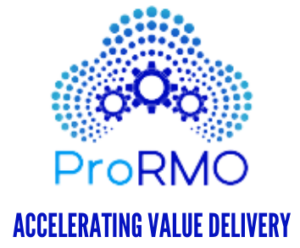Around this time, just after the 2nd wave of the Corona pandemic, we keep hearing the news coming out from many companies, especially from IT, ITES, Healthcare sectors, that employees are leaving in large numbers.
These great resignations may be attributed to many factors
Some of them are opinionated to be following based on my conversations with many companies, leadership people:-
- Remote working has opened opportunities in great numbers for mid-level and senior professionals.
- Startup boom is attracting very good investments, which are making the hiring of mid-level and seniors affordable.
- Professionals holding back due to this pandemic are now suddenly realizing their time has come
- Lots of professionals are now not interested in a full-time job. They want to engage on a contract/part-time basis. They have different plans to pursue with a sense of urgency to fulfilment of career desires

Entrepreneur, Author, Founder & MD at ProPMO Services Pvt. Ltd.
Initiatives: careerbuddyonline, ProRMO platforms, PMO & Business Agility training & consulting.
There are many more reasons, however, these are seeming to be the major causes. While we can attempt to address the first 3 of them with some of the out-of-the-box thinking and adoption of best practices, addressing the last one seems slightly challenging.
Fundamentally the main factor that supports the solution of this situation would be the higher level of bonding and loyalty that professionals need to have with the company. Employees need to feel that they are in right place and engaged in the right jobs and compensated for their capabilities.
There is a need for people in hiring, leadership, and line management functions to align themselves with the hiring strategy for the company. It needs to start from there for devising a more encompassing solution.
When we talk about hiring strategy, it needs to fundamentally cover the types and proficiency levels of the professionals that are appropriate for the company. Often hiring teams are totally blank about what is the minimum expectation we should have from the new hires for a job position. When resources are scarce in the market or conversion rates are lower, one must look at the grabbing of the resources which are a good fit for the company based on the understanding of minimum expectations from the resources on capabilities. Resources should be ideally hired for Right Attitude, Trainability and having must to have skills. We expect people hired with a mix of skills with higher proficiency and some of those at lower proficiency would take the offers and are less likely to reject/not show up on joining dates.
Next, the focus should be on how people are engaged and what systems are in place to support people engagement. Unfortunately irrespective of the size of the companies, there are lots of white spaces to be covered and blind spots to be focused on. Traditionally almost all companies have some kind of HRIS systems and ERP systems that would take care of the transactional side of the business-like payrolls, leave management, timesheets, project assignments etc. but there are huge gaps when it comes to people alignment from Goal setting to Goal realization.
One of the major concerns for employees is with the visibility they get to know about the organization and be able to know Why, How and What parts of various products and services of the company. Employees expect to know how the company is organized and who does what? How they can know this 24X7X365 perspective. Lack of visibility for employees is also perceived with the level of opacity across the organization. Currently IT department has a very basic solution to provide a view of org structure based on organizational LDAP and which would be essentially a contact list navigator.
A second most important aspect is the alignment of the Company’s objectives to goals at different levels in the organization which intern mapped to individual’s goals. Providing an opportunity for everyone to know how they are connected to the vision of the company and what contribution they make would impact the achievement of business success. Most of the employees complain that they are used like daily labourers by their managers/supervisors with to-do lists daily basis and tracked like materials movement. They do not see the company valuing their contribution and there are no means to showcase their contributions to the business success. Goal setting and alignment needs to be maintained through the performance year and not just as a one-time activity. Another huge challenge is the lack of systems to capture the strategic side of the goal-setting through balanced scorecards and aligning to the organizational goals that executive management would need to keep a very closer eye for the attainment of the targets. Performance reviews can’t be just an annual ritual anymore, it needs to be a continuous process to remain agile in keeping two ways communication channels with employees active with regards to performance and alignment to goals.
As we keep looking at further white spaces and blind spots, the next thing that comes to my mind is the ability to know the people and their capability levels for engaging them better and achieving higher ROH (Return on Hiring).
As the organization grows bigger and scales from small to medium to larger, the diversity of professionals from a capability perspective also keeps its pace due to the very nature of the scaling-up requirements.
An organization can’t simply go with thumb rules or experience norms for compensation-related decisions. Highly capable professionals are unhappy that laggards are compensated better or on par with them which is an insult to their abilities. Subjectivity plays its ugly role in allowing varying amounts of negative politics to creep in such decision making related to promotions, compensation and so on. There is a need for methodology with which professionals across all functions, are benchmarked based on their capabilities and what value they bring to the table or ROH. In the absence of such a system, the happiness index of professionals takes a severe beating. Also, good people leave, and bad people remain in the system which further aggravates the prospects for business success despite the macro-environmental issues concerning the business.
As if the problem of compensation anomalies remains in the organization are not enough, lack of means for identifying the right people for engaging in the right roles/requirements across the organization holistically allows inbuilt resourcing inefficiency into the process. Business loses time and ability to align the right people for engagement which would also impact ROI (Return on Investments). The unhappiness index would only grow with this anomaly and leads to professionals cribbing for the right assignments or overlooking the resource management.
While we look at how well employees are engaged, it is equally important to know how much they are not engaged. What precious spare capacities lie idle at different organization levels and for how long. That adds to the leakage of revenue if not fixed promptly. Lack of engagement over a longer period would lead to business losses. Having the right means to park the spare capacities at different organizational levels and enable sharing of available resources would be a positive for the business and from the employee’s perspective as well.
As we move on to more employees’ specific expectations, lack of support for their career growth is a concern for the long term as they age in the company, and employees make their moves when they think they must. Giving some pep talks without tangible progress on the ground leads to employees losing the trust of HR, Management and L&D in career growth. A company needs to ensure there is a focused program to align employees to career paths and also provide a career roadmap from short-, medium- and long-term perspectives. Employees need to be provided with opportunities to enhance current skills, acquire new skills as they grow in the organization. All of these needs to happen without any discrimination on their abilities, gender, performance and nationality.
Engaging employees in a continuous performance improvement cycle is paramount important to answer their desires grow on their career and be compensated better while their happiness index remains at satisfactory levels. Moving from subjectivity to objectivity in decision making related to Human Resources ensure that 50% of the war is won against the attritions.
Ensuring that the entire ecosystem of resourcing partners, L & D Learning and Development, Core HR, Line Management, Leadership, other supporting organizations work in tandem towards seamless delivery of business value, would derive the desired value from their investments for business success. Which is not a simple problem to resolve without adequate systems available as enablers.
At ProPMO we understand these white spaces and blind spots concerning Human Capital in organizations that become barriers to their overall success. We have built systems such as the ProRMO platform and careerbuddyonline.com to ensure that organizations can implement the right systems for acquisition, management and Business Continuity Planning for Human Resources.
Our path-breaking invention for capability-based benchmarking ProSki is a USP across our solutions landscape. We have a better career path configurator module than any of the HCM systems offers in the market.
Our Goal setting module is a nice integration of Strategic Balance scorecards and Organizational goal setting and alignment to individual employees level Goals.
Our hiring automation module ensures Right Professionals are hired for Right Jobs leveraging ProSki.
Organizational navigator, Resource allocation and deallocation and Bench management modules ensure people are aligned and engaged better with controls for appropriate management functions.
Our hiring automation module ensures Right Professionals are hired for Right Jobs leveraging ProSki.
Learning and Development connector ensures that capabilities of people are nurtured where they are needed and when they are needed without having any biases towards the employees.
ProRMO promises to be a great means to achieve the organizational objective to increase the bonding and loyalty of employees strategically. ProRMO enables the organization to increase the happiness index through credible actions enabled by various complementary modules and integrations with diverse systems functioning in the company. Ultimately ProRMO enables organizations to move toward objectivity-based decision making and reduce the negative dynamics which are barriers to business success!

Leave a Reply